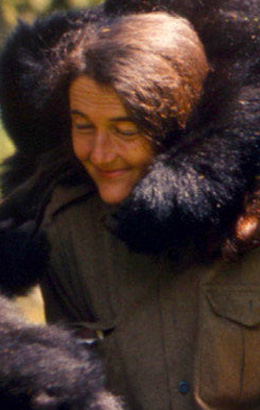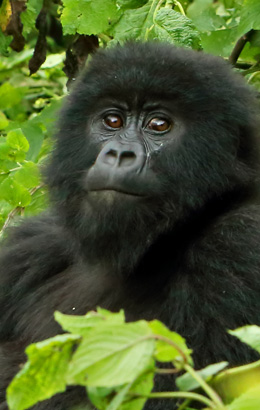Life in Goma: “At the door to hell”
Henry Cirhuza, the Gorilla Organization’s Projects Manager for DR Congo, has called the city home for most of his life. And so when he was woken in the middle of the night by loud thunder and the ground shaking, he knew what was happening.
“We were shook by tremors in the middle of the night. There is sulfur, heat and fear in the air. People were afraid. They remember the 2002 eruption that killed hundreds and destroyed large parts of Goma. Luckily, this time the lava stopped at the airport, just outside of the city limits”

However, the eruption caused widespread confusion and panic. Huge numbers of people decided to leave the city and get as far away from the volcano as they could, not knowing if there was worse to come. Neighboring Rwanda, less than 100 kilometres away, closed its borders.
At latest count, 25 people have lost their lives, and 2,500 houses have been destroyed in the suburbs to the north of the city.
The provincial authorities ordered people to evacuate 10 of the 18 city districts. This caused further panic and resulted in the displacement of thousands of people ( maybe as many as 400,000) Vulnerable people of all ages found themselves exposed to security risks, without food and water and worried that their homes could be looted.
“For its part, the government of the republic has promised to mobilize resources to supervise the movements of displaced people and secure their property. Last I heard, nothing has been done to date.”
Humanitarian aid organizations are there on the ground, but they are struggling to deal with a range of issues. People are without shelter, food, hygiene kits, access to drinking water and healthcare. They are also without access information and access to cash.
Large numbers of families have been separated, leaving children alone and vulnerable. What’s more, 20 cases of cholera have already been recorded in the small town of Sake.
Due to the lack of proper support and following poor communication from the authorities, some displaced people have started to return to Goma, even if they are still afraid that Nyiragongo will erupt again.
“As far as we’re concerned, everyone has been affected in one way or another. Our team’s families were moved to Kalehe. The mother of our colleague Tuver suffered a heart attack and is currently in the hospital. Above all, we are struggling with a lack of clean, drinking water since the pipes serving the city are broken.”

Mount Nyiragongo is located within the Virunga National Park. The Park’s endangered mountain gorillas live close by. Rangers patrolling their habitat have reported that the gorillas were clearly unnerved by the smells and sounds of the eruption. One ranger even said the gorillas could “sense the fear in the air”. However, all gorillas are safe, and ranger patrols have continued as normal over the past couple of weeks.
For now, the city is rebuilding and trying to get back on its feet. Nobody knows, however, when the next eruption will come, or whether next one will be even more serious.
“The road to Rutshuru which supplies Goma with food is finally open. At this stage we can say that the risk is behind. Goma remains a dynamic city but one that is ultimately doomed to disappear. We have to live with the Nyiragongo, but it’s still the door to hell.”















